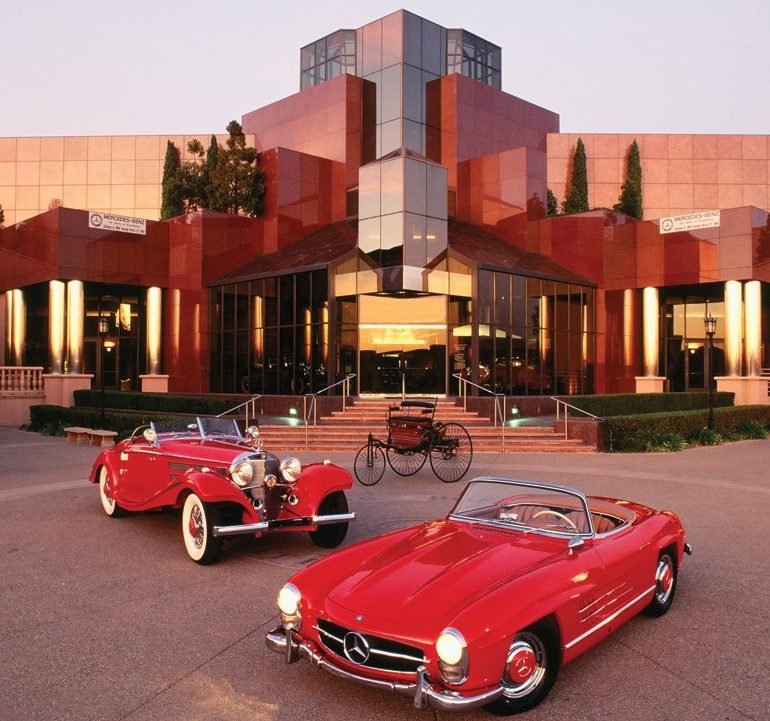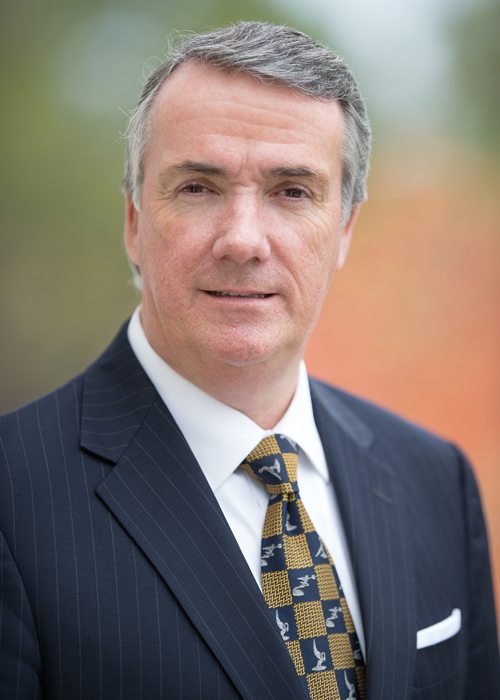
VR: How did you get started in cars? I assume as a child. You grew up in the UK, correct?
TM: I did. I grew up in Kent, southeast England about two miles from Brands Hatch. So, spent many a misguided school day out at the racetrack.
VR: In those formative years, was it racing, road cars or both that captivated you? What really infected you with the disease?
TM: I think racing was the prime. I think even in today’s world, motorsports outside of the U.S., especially in Europe, is one of the top sports. There’s soccer and motorsports. First of all, my dad was a used car dealer, so I grew up around cars. When I was five, for my fifth birthday I got an Austin A40 pedal car. I probably spent the first three nights sleeping in it! Loved that thing. So, racecars were very much a core part of my passion. Being close to a racetrack, it was bikes and Formula One. At that time, the Grand Prix went between Brands Hatch and Silverstone every other year. Sports cars, go-karts, anything that would have an engine in it, we would go and watch.
VR: As you got older, how did you transition from cars being your avocation to them being your vocation?
TM: Well, to cars being my passion, for a period of time motorcycles sort of took over because in England you could get a motorcycle license two years before you could get your car license. So, much to my mother’s fear, we had motorcycles. Because my dad was in the car business, he allowed me to move cars around his showroom a lot at an early age. So, I was very fortunate, I actually got to sort of drive cars, albeit short distances, from about 12 on. So getting into sort of the car world we went through the motorcycle stage. [pullquote]
“The museum was designed to showcase cars like a diamond would be in a vitrine case.”
[/pullquote]
VR: Did you start in your dad’s business? Is that how you got started in the business side of cars?
TM: No, I worked part time for my dad on the weekends. I sort of worked off what it cost my dad to maintain and fix my car. I didn’t get paid to work there but I sort of had a tab running so when the brakes needed doing, his mechanics did it. I worked it off. He was a firm believer that I was going to make my mistakes on somebody else’s watch. I’d actually had a mechanical engineering degree so I was working at his place on the weekend. When I left college, there was a summer off when I finished college, so a friend of mine we took up Freddie Laker and we came out to California, and I just got the hook. Just four weeks in California, and on the plane back in 1981, I just kept saying, “I’ve got to go out there and try it.” As I think everybody does when you live in climates like England, especially in the early ’80s, when everything was as bad as it was. And all my friends did the same whether they went to Florida or to Spain or wherever, everybody came back and said, “I’ve got to go out and live there.” In February ’82, I took everything I could fit in two suitcases and it was either going to work or I had to get it out of my system.
VR: Before we jump over to California, you mentioned your first car that you were working off with your father. What was that first car?
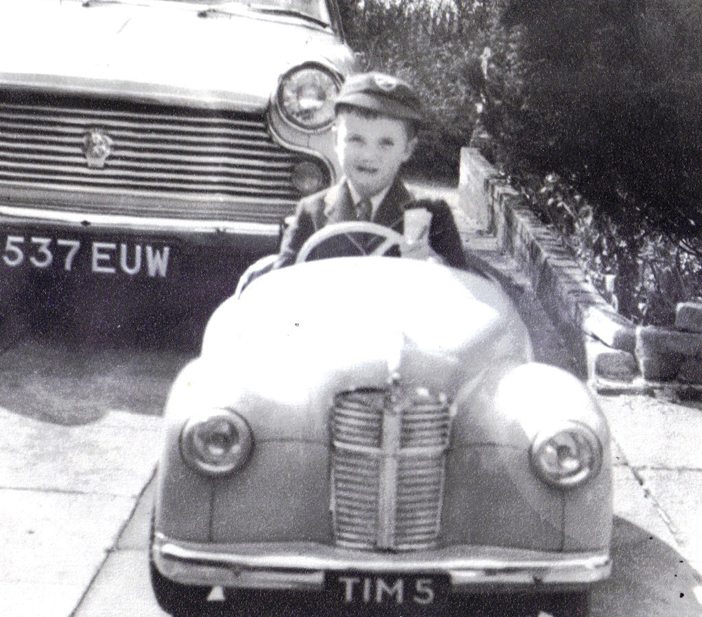
TM: It was a 1970 Ford Cortina 1600E. When you were a kid in school, you want a two-door sports car and I dreamed of owning a Ford Capri. A couple of my older friends had them and that’s the only thing I could imagine. My dad took this Ford Cortina in as a part exchange, it was gold with a tan interior. He said, “I’ve got this 1600E; you should come and take a look at it.” And it was a four-door car; the last thing I was interested in was that, but he sort of convinced me that I wasn’t going to get a Capri and I should take this. So I had that for years and they became collectible in that mid-range British world and a lot of our friends also got them. That was my first car and I kept that until I moved to California. I kept it for about three years after but my dad convinced me to sell it. He said, “After driving American cars, you won’t want to come back to drive this so why don’t we sell it.” He was right.
VR: How did you get involved with Rick Cole, when you came over here?
TM: You know, arriving in Palm Springs with a mechanical engineering degree and not being able to play golf, you sort of have to find something to do! So, I ended up in the hospitality business. I worked for a chap who had a very successful nightclub. And there was a group of us, there were like three English guys who were involved with this event to do with the Chamber of Commerce and we were trying to work out something to generate early season business, which is that early, you know, Thanksgiving time. And, because we were all car people and there was a couple of other people in the Chamber, we thought we’d put on a vintage race. Because we were car people and we had to do that. At the time, there was Monterey, and I think the Chicago Historics. Palm Springs had that whole vintage race history. So we started working on it in ’84 and in ’85 we used a local Southern California race organization that was an offshoot of VARA and we convinced the mayor. We put together this vintage race. It was a rectangular track with two chicanes and it was a hit. A whole bunch of people showed up unexpected. Gurney was driving an Eagle, Shelby showed up for the dinner. It was racing in Palm Springs, which hadn’t happened for a long time. So we knew we were on to something but we knew almost immediately we were in over our heads. So the president of the Chamber reached out to Chris Pook who was running the very successful Long Beach Grand Prix at the time, to see if he’d be interested in being the race promoter. He was also doing the IMSA race at Del Mar at the time, and Chris took it on. You know, anything to make money was Mr. Pook’s motivation. So Chris took it on.
Being in Los Angeles, he knew Rick Cole, who was one of the early shareholders for the Long Beach Grand Prix in the early days. Chris brought Rick in to do an auction as a revenue stream and I got introduced to Rick. At that time, I wasn’t involved with the volunteer group that was supporting the auction, I was involved with hospitality. But, at the last minute, I was asked to jump in and help support the auction from a volunteer point of view and we hit it off. He asked me, “Have you ever thought about working in the auction business?” I had no idea about the auction business, didn’t know you could get paid to play with cars! By the end of that year, or I think January of the following year, I had a full-time job with Rick. Back then, in the late 1980s, the sports car and racecar market was on a roll. So, I did sales for him.
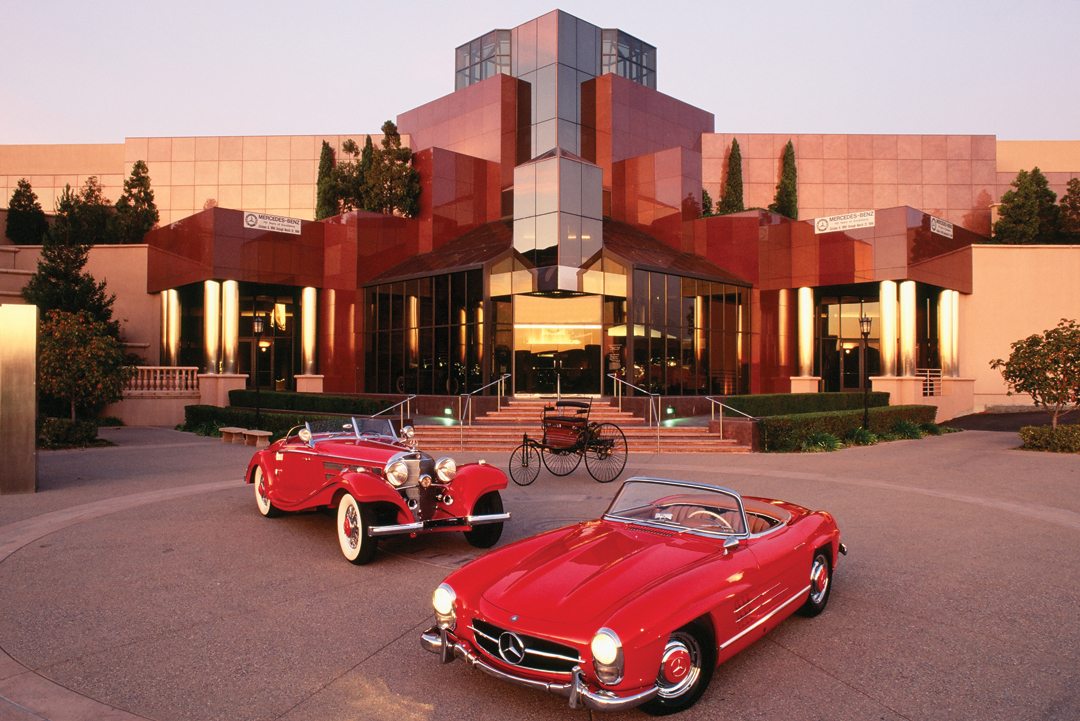
Photo: Ron Kimball
VR: And how many years did you work with Rick Cole Auctions?
TM: I worked with Rick from ’87, my first year, through ’93, which was when his company was acquired by Don Williams and the Blackhawk Collection. Rick and I, we relocated up to Danville. Rick Cole Auctions was acquired by Don’s Blackhawk Collection and they formed World Classic Auction and Exposition Company, which was Richie Clyne, Don Williams and Rick Cole.
VR: And so you were there for how many years before you went to Barrett-Jackson?
VR: You were at Barrett-Jackson for quite a few years.
TM: I was at Blackhawk and we were just doing a couple of events and it was sort of the heyday of the dot-com era. Then Barrett-Jackson, Speedvision and Hemming’s Motor News were getting together to form a dot-com company called e-Classics and I was approached: Would I be interested in joining them to head up marketing for this new venture? I was intrigued by it. Obviously, I knew Craig [Jackson]. I had spent some time over there with Barrett-Jackson because of Don’s involvement with Barrett-Jackson over the years. When Craig heard that I was involved, he said, e-Classics should be based out of Scottsdale. So when I went to e-Classics, I moved to Scottsdale. I think Craig probably had me in with e-Classics for about five minutes before I was switched to Barrett-Jackson!
VR: And so, coming full circle, after eventually going out on your own for a while, you’ve recently come back to the Blackhawk Collection as the executive director.
TM: That’s correct. I’ve had, from the time I’ve known Don, we’ve had a very close relationship. He’s a very important person in my life. And we’ve kept in touch on a frequent basis and he called me last year and said, “Have you ever thought about coming back?” I hadn’t, I was doing events in the luxury lifestyle space, I was doing some contract work for Pebble Beach Company and Pebble Beach Concours and consulted with Credit Suisse as part of their classic car program. So I was still very much involved in the classic car world, but also doing these other luxury events and actually was sort of very focused on what I was doing. But when Don called and said, “Would you be interested in talking?” Absolutely. He told me what he was thinking. He wanted to make a change at the museum and would I be interested in heading up the museum for him. So we talked and by December we were able to put something together that made sense.
VR: The Blackhawk, I think, is a museum that everybody has heard of but not necessarily everybody has gone to see or really knows the background story on. So, in sort of a nutshell, can you give us a little bit of an insight into the goals and directions of the museum?
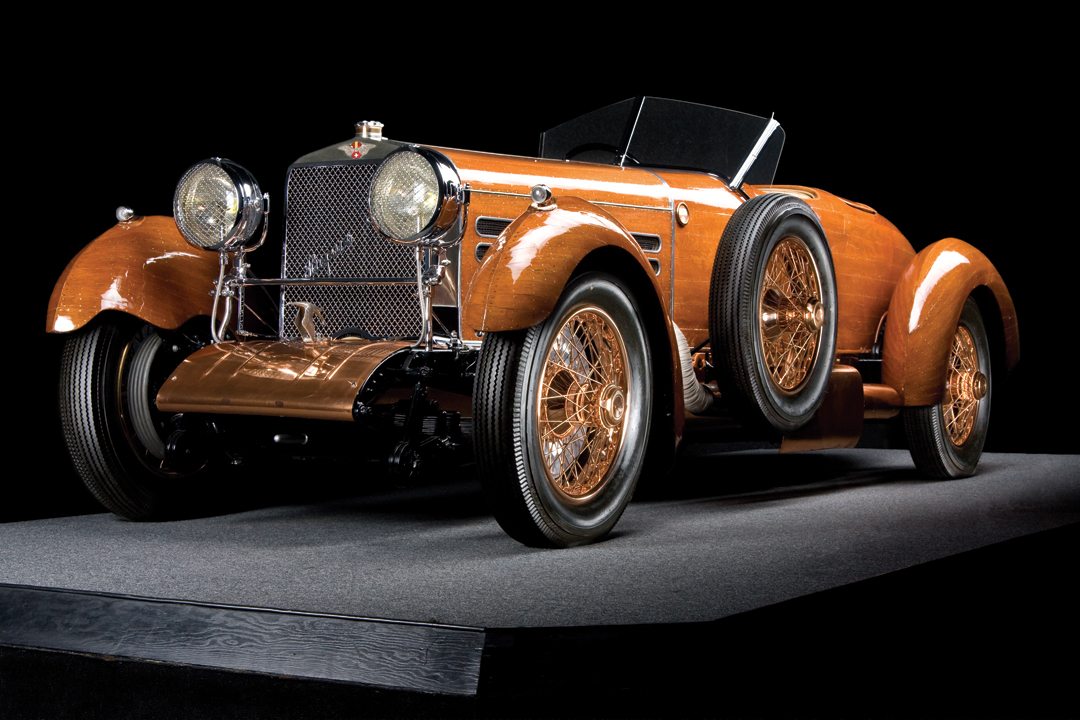
Photo: Ken Brown
TM: Blackhawk was opened in August of ’88. It was an idea that Don Williams and Ken Behring formed. Don was actually with Tom Barrage in Scottsdale and Ken, who was developing Blackhawk, was looking for not so much a vintage Rolls-Royce, but a classic Rolls to take people around this really new upscale development. They called the chaps at Rolls-Royce in San Francisco and said, “Do you have any classic Rolls-Royce?” They said, “We don’t sell those, but there’s a chap in Scottsdale who does.” Ken went over with the intention of buying one car. Don, being the salesperson that he is, sold him two and they hit it off. Then Ken came back and ended up buying a couple more cars. Don had this idea, had this plan that he was hoping to sort of put together with these investors to build the world’s greatest classic car museum, and it was not going to be where it ended up, it was to be in another state. Ken was intrigued by the idea that it would be part of this new Blackhawk development. So that sort of launched the idea of taking Don’s concept, with Ken being the benefactor and creating what is now the Blackhawk Museum.
VR: And now that you’ve assumed the reins, what do you see as the future and the challenges for the museum? Where are you trying to take it, or what do you want to try to achieve in the coming five years?
TM: Firstly, I think the museum was considered one of the top five or top ten museums when it opened, and I think it’s still in that category. It’s still one of the top automotive museums in the world. First of all, it’s spectacular architecturally, regardless of what’s in it, and you know it has some of the greatest cars of the world in it. So I’m very, very fortunate I’ve taken over the helm of a 25-year-old—or just celebrating the 25th anniversary this year—institution that all we need to do is put it back in the spotlight where it was. For the last decade, however, it hasn’t been sort of the focus of attention. If you are core to the classic car world, you’ve heard about it or you’ve been there, but if you joined the classic car community in the last 10, maybe 15 years, you may have heard about it but as you say, not a lot of people have been there. So my responsibility is really a couple of things. One, is to increase significantly the awareness of the museum from a local point of view all the way through to an international point of view—and from the point of view of fundraising and generating revenue opportunities for us to create new programs. One of the fallacies that museums have—especially something like the Blackhawk and I think maybe the Petersen probably has the same issue—you know where there’s this paying benefactor when it launches and everybody thinks, “Well they don’t need money, look at them, they’ve got everything they need.” And the reality is, that these institutions do, they do need to go out and fundraise to create new programs or to develop an ongoing program. So, yes it’s got programs in place to fund certain aspects. So corporate relationships, corporate partnerships are something I’m very focused on, especially for the 25th and moving forward. Then another area is to make the museum very much a core part of the San Francisco Bay area or just the car community as a whole. I want to get the museum back to where everybody knows it, it becomes part of everybody’s bucket list if you’re an automotive person, you have to at some time in your life, find time go to the Blackhawk Museum.
VR: Now, speaking of the DNA of the museum, for those who aren’t familiar, what is the central theme or the collecting ethos behind the museum? Is there a central theme to it?
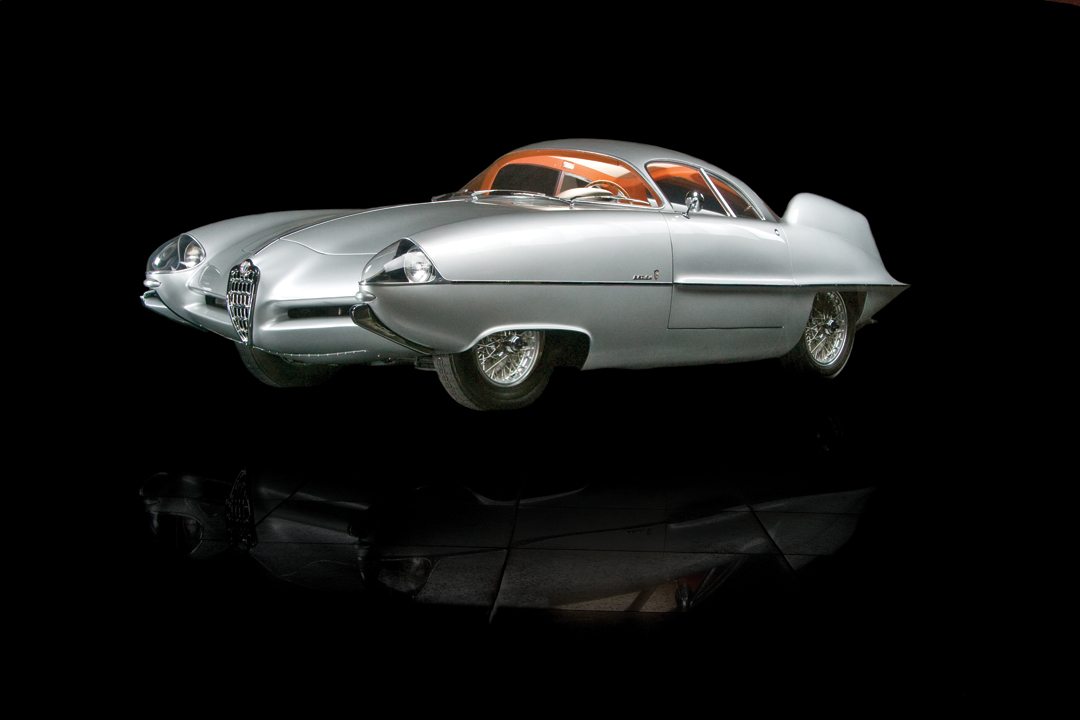
Photo: Ken Brown
TM: There is. First of all, the museum was designed to showcase cars like a diamond would be in a vitrine case. It’s about the diamond with a pin spotlight being on the diamond. That’s what we have—we don’t have street scenes, we don’t have dioramas. It’s about the car being showcased on this black granite floor and very dark, huge walls so the cars are like jewels in the two galleries that we have them in. The main focus of the museum is cars from the late ’20s, early ’30s, either one of a kind or very limited production custom coachwork automobiles. In addition to that, we have a collection of ’50s European sports cars, again either one of a kind or very limited production. So those are the two eras that we showcase.
VR: What is the current car count, in terms of the number of cars on display?
TM: Give or take one or two, we average about 90 cars on display at any one time.
VR: Let’s shift gears just for a moment, back to you on a personal level. Tell me a little bit about where your personal tastes in classic cars run. Do you have specific cars that you collect or that you have a particular passion for?
TM: Truthfully, I’ve been very fortunate. When I was with Rick he was handling some of the greatest sports or racecars on the market. The two times I’ve been with Don, they’ve had 150 of the greatest classic cars that you’re able to, let’s say, use to drive, to take to shows. So from that point of view, I’ve been very fortunate. My passion though is very patriotic, I’m an Aston and a Bentley person. With that being said, I have a strong appreciation for a lot of cars out there whether they be classic cars or sports cars, but Astons and Bentleys, they’ve always been top of my list.
VR: Do you collect yourself? What do you have of your own that you drive?
TM: No, actually I drive a Jaguar Vanden Plas sedan. You know, it’s tough when you’re around the world that I’ve been around, to be around those cars every day of the week and then think about going back to a TC or an E-Type or something like that. I’ve always been able to live my car passion through the companies I’ve been associated with.
VR: Now, a question we always like to wrap up with…if a genie were to pop out of a bottle and grant you one automotive wish…is there one car out there that you’ve just always dreamed of owning or would want to own if it could just be granted to you?
TM: That is a really hard question! It would probably have to be the ’59 Le Mans-winning DBR 1 Aston Martin. When I was a kid, there was just something about that car. It’s looks, the fact that it was an Aston, the guys who raced it. That’s another area where I’ve also been very, very fortunate in the companies I’ve worked for and the events I’ve been associated with. I’ve been able to become friends with people that were my childhood, schoolboy idols. Drivers like Jackie Stewart and Carroll Shelby, Stirling and Susie Moss, Jack Brabham…I’ve been very, very fortunate.


